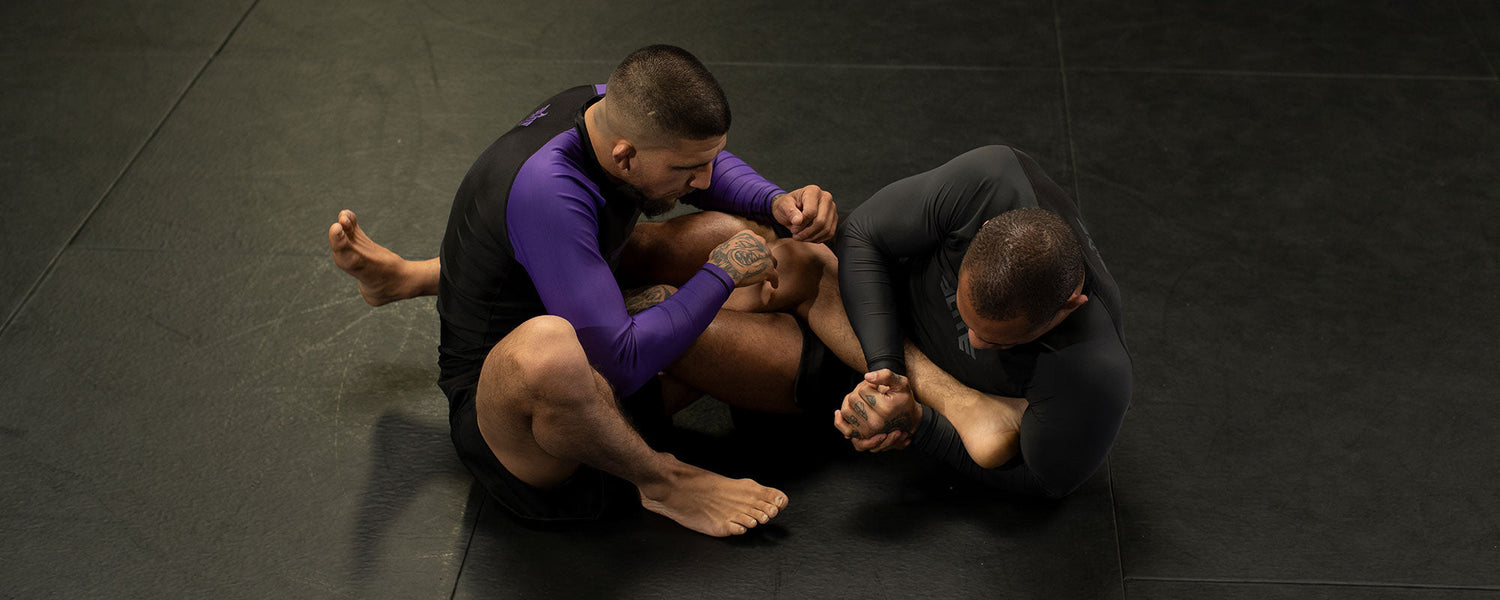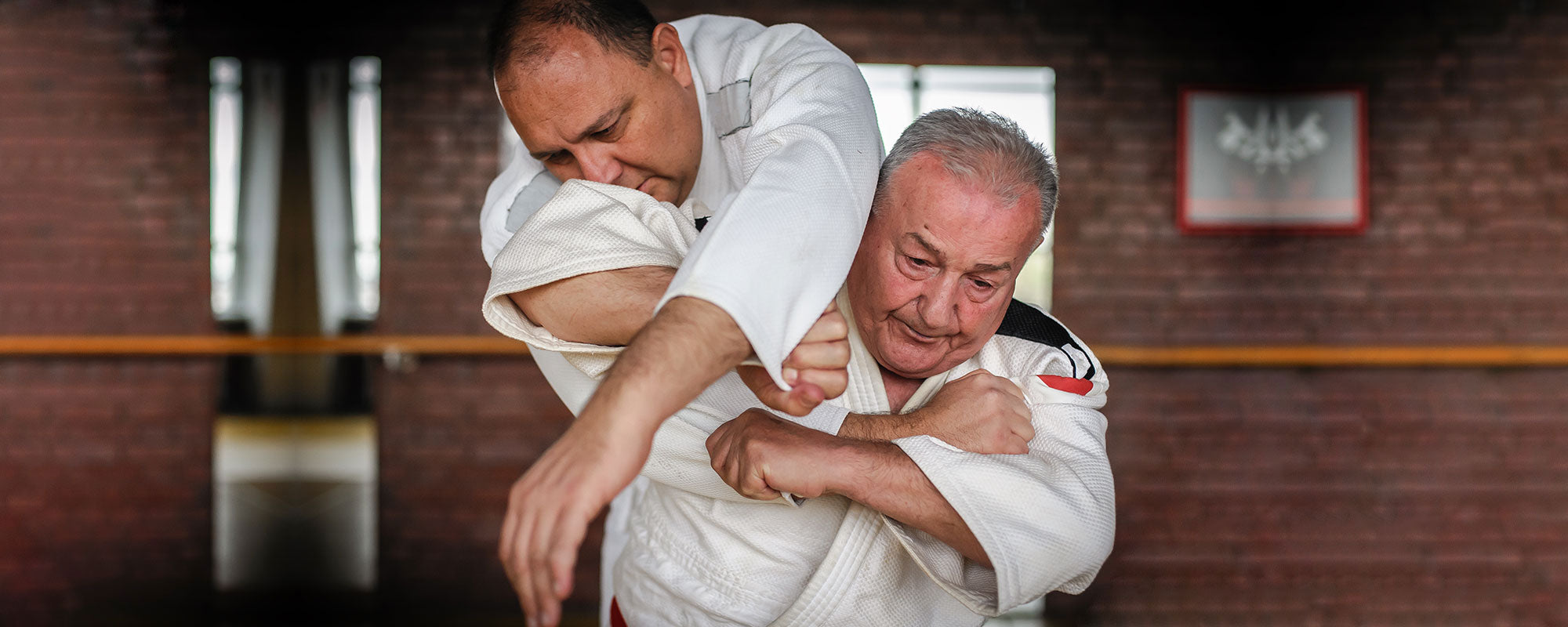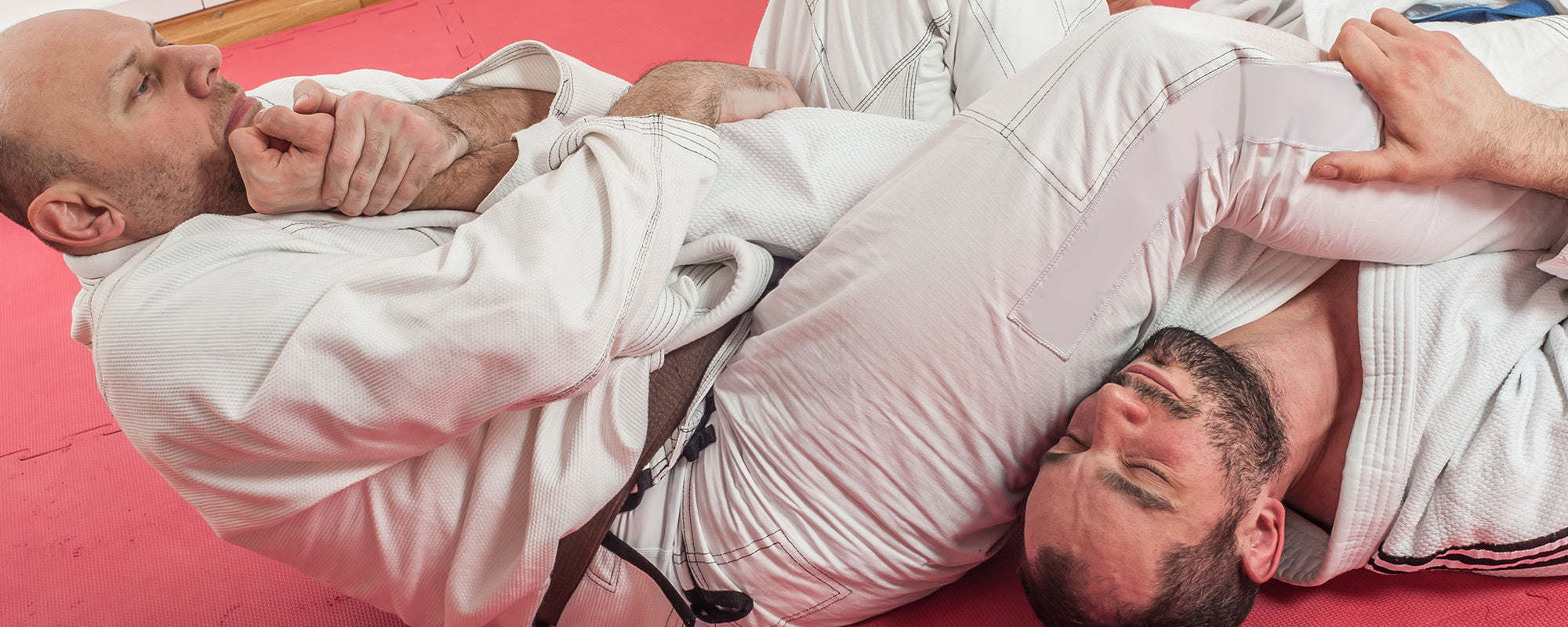Table of content
1. Leg Locks and Brazilian Jiu-Jitsu
The art of Brazilian jiu-jitsu is a versatile combat sport that has revolutionized over the past years. Leg locks are the most essential weapon of the top contenders, and they can be used in the Gi and NoGi tournaments.
Leg locks are the most popular entanglement that can change that can bring drastic changes in the bout. The fighters target the lower body to reach the knee or ankle for the takedowns and submissions. The modern leg entanglement can be applied with a slight change in the angle to modify the leg locks.
According to the various BJJ tournaments, the rules and regulations of the leg locks vary. The leg entanglements are quite different depending on the rank of the BJJ practitioner. Leg locks require a controlled position, as it is crucial while doing the transitions; some of the leg locks are completely banned in BJJ.
This article will delve into the minute details related to the leg locks, their origin, mechanisms, and escapes, and we will cope with the answers to the frequently asked questions.
2. History of Leg Locks

Leg lock entanglements originated almost 2500 years ago; this technique is part of most martial arts. Leg locks are used to get dominance over the body with leverage. It includes the involvement of the large joints, including the hip and the shin, or small joints, such as the knee or ankle.
This joint lock is part of the various martial arts, which include:
Legs locks have a profound history, it is the joint lock that is highly effective, and at the same time, it is considered to be extremely dangerous. With a little misplacement of the angle or increased pressure, the contender might break the opponent's bone. That is why the use of the leg locks is banned in most of the tournaments or this technique has to go through certain levels of restrictions.
The rich history of Brazilian jiu-jitsu depicts that in the early time period of jiu-jitsu, the fighters put the prime focus on controlling the upper body of an opponent. It was observed that targeting the legs or lower body is ineffective. Later, jiu-jitsu experimented with leg locks in a predefined manner that kept safety measures at the top.
3. Various Positions of Leg Lock
There are various positions of the leg locks that provide advantages for the fighters. These fundamental leg positions specifically target the knees, ankles, and the hips base. The entanglement of the joint lock is highly effective. This ultimate guide is going to let you know about the leg lock position along with the most effective ways to escape the leg locks.
3.1. The 50/50 Guard
The 50/50 guard is the position of the leg lock where both of the contenders are probably in the same position. One leg is placed inside the leg in the same way.
3.2. Leg Knot
It is one of the highly effective positions that can be applied in various ways. In this way, the fighters can perform a variety of leg entanglements. Due to the accuracy of the leg knot position, it is also called the game over position. The contender places one leg over the opponent’s leg and the other under the leg.
3.3. Ashi Garami
Ashi garami is the joint lock that is used in multiple martial arts, that also include Judo. It is the most unique leg lock, combining grips, locks, and transitions. The technique targets the opposite leg of the opponent, and it can be applied even from a standing position.
3.4. Variations of Ashi Garami
Ashi Garami has two unique variations that can provide the opportunity to submit the opponent with a powerful technique:
Outside Ashi Garami
In this position, the outer leg is placed at the thigh of the opponent; the leg is most probably put at the top.
Inside Ashi Garami
As the name indicates, Inside Ashi Garami is the leg lock in which the inside part of the leg is at the outer side of the opponent’s leg.
Straight Ashi Garami
It is the fundamental position in which the fighter targets the opponent’s leg that is at the side of him.
3.5. Inside Sankaku/ Saddle
This position is known by the multiple names Inside Sankaku, Saddle, Honey Hole, and 411. Inside Sankaku is a versatile method that is applied with both legs, and it is often considered to be the most potent and effective position of the leg lock.
4. Effective Ways of Leg Locks Escape

In the art of grappling leg locks have a significant place, it has the highest percentage to submit the opponent instantly. Leg locks are the most effective tool of the top BJJ contenders. It is quite evident that the leg locks are the weakness of most of the grapplers. Let us find some of the ways to escape from the leg lock submission.
This article is going to explore the six most effective ways to escape from the leg locks,
4.1. Roll Through
The knee is entangled under the knee of the opponent, and the foot is under the armpit. Gordon Ryan applies the leg escape in a fascinating way that unleashes new possibilities for the BJJ fighters.
Ryan has introduced the technique of 'Roll Through,' a move that demands lightning-fast reflexes and exceptional agility. Rolling down involves the belly facing the mat, requiring the fighter to move swiftly and skillfully, ensuring the opponent moves with the fighter.
Mechanism of the Escape
- The first step is to apply a roll or move toward the side where the knee can move.
- As you move, the opponent will keep the hand on the mat to restrict the movement.
- It would help if you moved in a way that your opponent would roll with you.
- The next important step is to put the forearm on the mat one by one.
- Then, with a swift movement, you need to move the outer leg over the opponent's hips.
- After that, you can take out the entangled leg very smoothly.
4.2. Knee Bar Escape
As the name suggests, the knee bar is a leg lock targeting the knee. It is a comparatively simple escape that focuses on a few significant factors. It is also used in various martial arts; it is famous for the names:
- Knee lock
- Legbar
- Hiza-juji-gatame
The application of the knee bar is the same as the armbar the difference is the entanglement of the legs instead of the arms. The fighter will create a joint lock over the knee to control it. The kneecap is secured in a way directed towards the body.
Kneebar is the most common submission method that is also one of the strongest entanglements in jiu-jitsu. Every leg submission requires a particular focus in pressure control and angles.
Mechanism of the Escape
In the first step, the fighter is in a very difficult position, halfway down on the mat. The hands grab the foot, and the knee faces the pressure of the opponent’s leg. The fighter is imbalanced in the joint lock.
- The first step is to put the outer leg on the inner side of the opponent’s knee or back of the knee.
- Put both of the hands on the mat to maintain the balance.
- Next, slide at the back side by applying the foot's pressure.
- Drag yourself in the backward direction, and you need to make a space side by side.
- The significant part is to adjust the position of the leg.
- You will find that your foot is still grabbed with the hands.
- The next step is to move yourself back on the mat, then come forward and grab the opponent’s knee.
- As you are pulling the knee, move back to create the space.
- If this does not work, place the outside foot on the shin or at the back of the knee and apply maximum pressure to release yourself.
4.3. Inside Heel Hook Escape
There are two types of heel hooks that are used in jiu-jitsu, and we will discuss two of them. In the inside heel hook, the fighter attacks the inside leg and inside heel. Before discussing the escape, learn about the possibilities of its execution; it provides maximum opportunities. Inside heel hooks can be applied from the following:
- Saddle Position
- 50 / 50 Position
It is the reverse of the outside heel hook. It is the most dangerous position as the knee is placed outside the ankle. It is the most risky task to do. We will give you the guidelines in stages:
Mechanism of the Escape
- The first step is to get patient and relax so that you can apply the procedure of escape. A minor mistake can lead to significant damage.
- The entangled leg is in a very delicate position as the knee is outside the ankle position. A little wrong angle can be very dangerous.
- The fighter needs to apply the pressure in the inward direction.
- Place your opponent on the mat by moving your knee.
- The next step is to point the toe or change the direction of it.
- Slide a bit back to give your leg space.
- Push the leg to get out of the joint lock.
Note: It requires a lot of practice in a controlled manner.
4.4. Ashi Ankle Lock Escape
Ashi ankle lock escape is also known as the standard Ashi Ankle Lock Escape. The basic defense or escape can be applied by a BJJ beginner or a practitioner. As you have found that your legs are entangled with the joint lock, you must stay calm to contemplate the next move.
Remember, always use the opposite hand to get out of the entanglement. For instance, if your right leg is in a joint lock, use the left hand to defend or escape. The easiest technique is to put the weight over the opponent and try to move out from the different side. This is important to distract the opponent. Figure out the step-by-step application of the Ashi Ankle Lock Escape.
Mechanism of the Escape
There are two ways of escape from the leg lock. Find the two procedures of Ashi Ankle Lock Escape.
First Procedure
- The first step is determining which leg is entangled in a leg lock.
- If your left leg is captivated, your left hand must be on the ground for balancing.
- Maintain a steady balance by making your hand as a base.
- The right hand and right leg must be outside.
- Take the right hand and move it down; hold the lower leg of the opponent.
- Try to get up a little and place your butt outside the opponent’s leg.
- At the same time, try to push the upper leg of the opponent with the pressure.
- Slide your body outside by dragging it on the mat.
- Take out your bottom leg and keep it on the torso of your opponent.
- Insert the force in the backward direction.
Second Procedure
- The left leg is locked; use the left hand (or same side hand) and put it over the opponent’s right bicep with a tighter grip.
- Place your opposite hand or right hand on the opponent's knee.
- Apply the pressure and move his knee away from your side.
- Move at the back side by exerting pressure on the opponent’s knee.
- Tilt on the left side and place your outside leg inside.
- Then, keep the leg on the torso and push the opponent in the backward direction.
4.5. Outside Heel Hook Escape
Outside Heel Hook is also known as outside ashi garami; it is one of the fundamental jiu-jitsu techniques. It is a joint lock that targets the foot, ankle, and knee at the same time. It isolates the knee, and the fighter becomes immovable instantly. It is part of the various martial arts, and it is modified in jiu-jitsu.
The three main joints of the legs are locked in different directions. Let us find out the way to escape in the following procedure:
Mechanism of the Escape
The knee is locked under the opponent’s knee, and the foot is entangled in the armpit. At the same time, the foot hook is locking the knee in place.
- The first step is to trap the hand of the opponent and place the hand on the hand to get a secure grip.
- The next part is to apply pressure to take the hand in the outward direction.
- The next step after holding the heel is to turn the heel stuck over the opponent's arm.
- This technique's outer foot is crucial, providing a stable and secure support base. The opponent might put the effort into grabbing the heels again; at that time, you need to set the outer foot on the lower hand of the opponent.
- The final step is to pull the lower leg to move quickly.
After getting out of the entanglement, the fighter can do the counterattack with the following technique. Turn the defense into the counterattack.
- Roll over by placing the hands on the mat with a swift movement.
- As you face the mat then, separate his feet and hold it tight.
- As the fighter moves upward, he has entangled the opponent's leg.
- Now that the fighter is in the 50/50 position, he can easily keep the leg over the torso or under the opponent's outer leg.
- The last step is to finish the leg lock by rolling the side over the trapped leg.
4.6. Cross Ankle Technique
The cross-ankle technique is a technique that the fighter can apply before the submission gets too intense. The cross-ankle technique is applied when the fighter realizes he will get caught in a trap of the leg lock. Let us find out the method to get out of the leg lock:
- The first step is to get down on the mat as you have noticed that you are trapped in the leg lock.
- As you get onto the ground, move in the backward direction.
- Use the shrimping method and try to create the space in between.
- Make sure to point the trapped foot; it will help you get out of the entanglement quickly.
5. FAQs
5.1. Why leg locks are considered to be dangerous?
Leg locks are the entanglement that targets the main joints of the leg, including:
- Ankle joint
- Knee joint
- Hip joint
The leg locks primarily target these joints at such an angle that if a practitioner applies slightly more pressure or misses the angle of the leg lock, it can instantly lead to the bone's breakage.
5.2. Is it legal to apply the leg locks in BJJ?

Over the last few years, leg locks have become the most helpful technique to submit the opponent. However, leg locks are restricted in most tournaments because of the risk of danger.
The restrictions vary according to the belt ranks, it might vary as per the BJJ organizations or training centers of jiu-jitsu.
5.3. What is the easiest leg lock escape?
The best way is to stay aware while getting entangled in the leg lock. When you realize that you are about to get trapped, point your toe to prevent your knee from getting trapped. Turn the sole of the foot towards the opponent to apply pressure to escape. Maintaining space, the ashi gourami position, and the cross-ankle technique will help in this regard.
5.4. Why are leg locks the most effective way to submit an opponent?
It is the most widespread way to take control over the opponent with the leg locks. The leg entanglement is highly effective and expands its variations. The various leg locks are applied in a way that submits the opponent quickly.
6. Last Words
Leg locks are the most basic submission method and are also highly effective. It is applied to the joints of the leg in three main positions: the hip joint, ankle, and foot. This ultimate guide has provided the best possible escape strategies, which are knee bar escape, inside heel hook escape, ashi ankle lock escape, and innovative techniques of cross ankle. These leg escapes will surely help you get out of leg entanglement.












Leave a comment
This site is protected by hCaptcha and the hCaptcha Privacy Policy and Terms of Service apply.